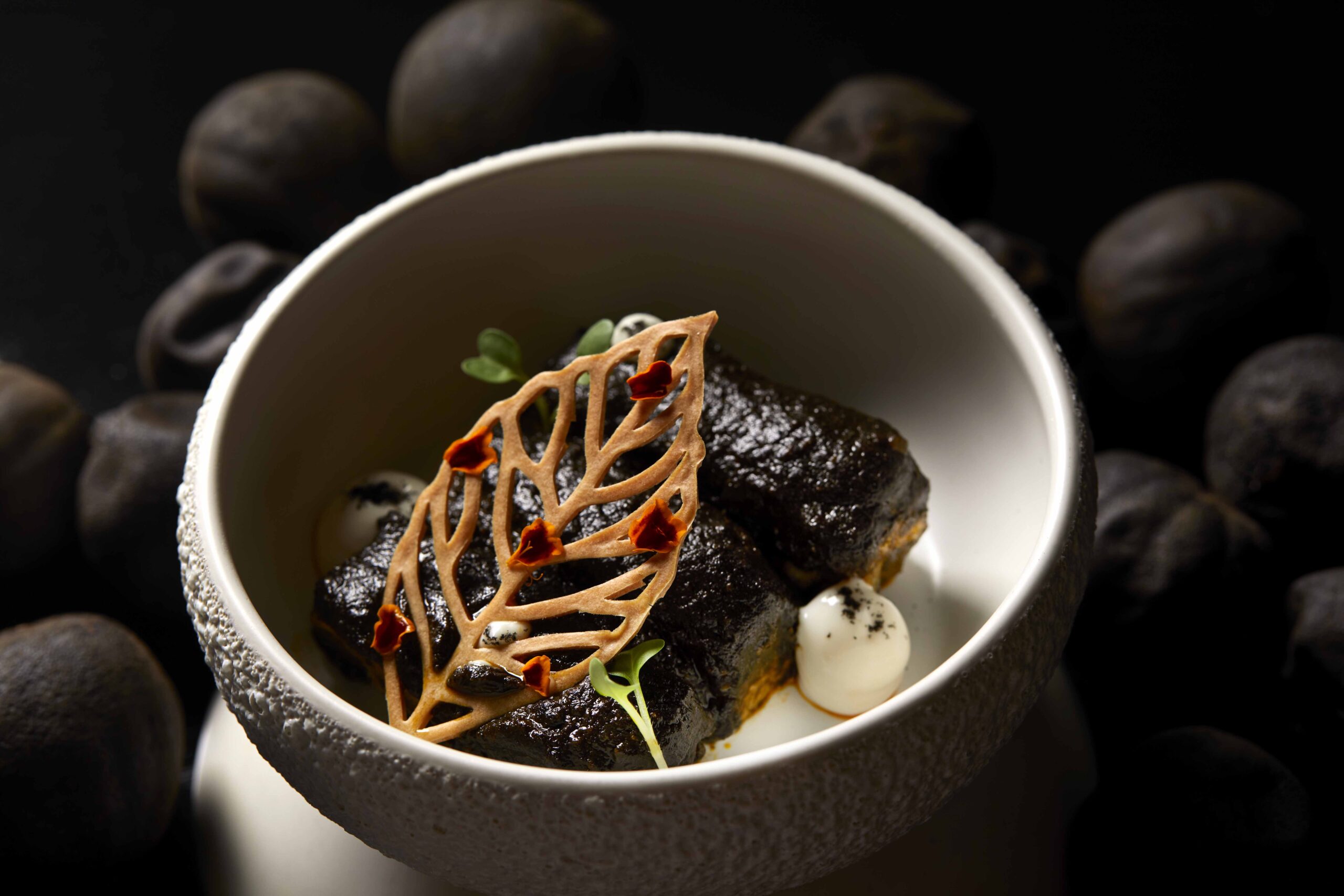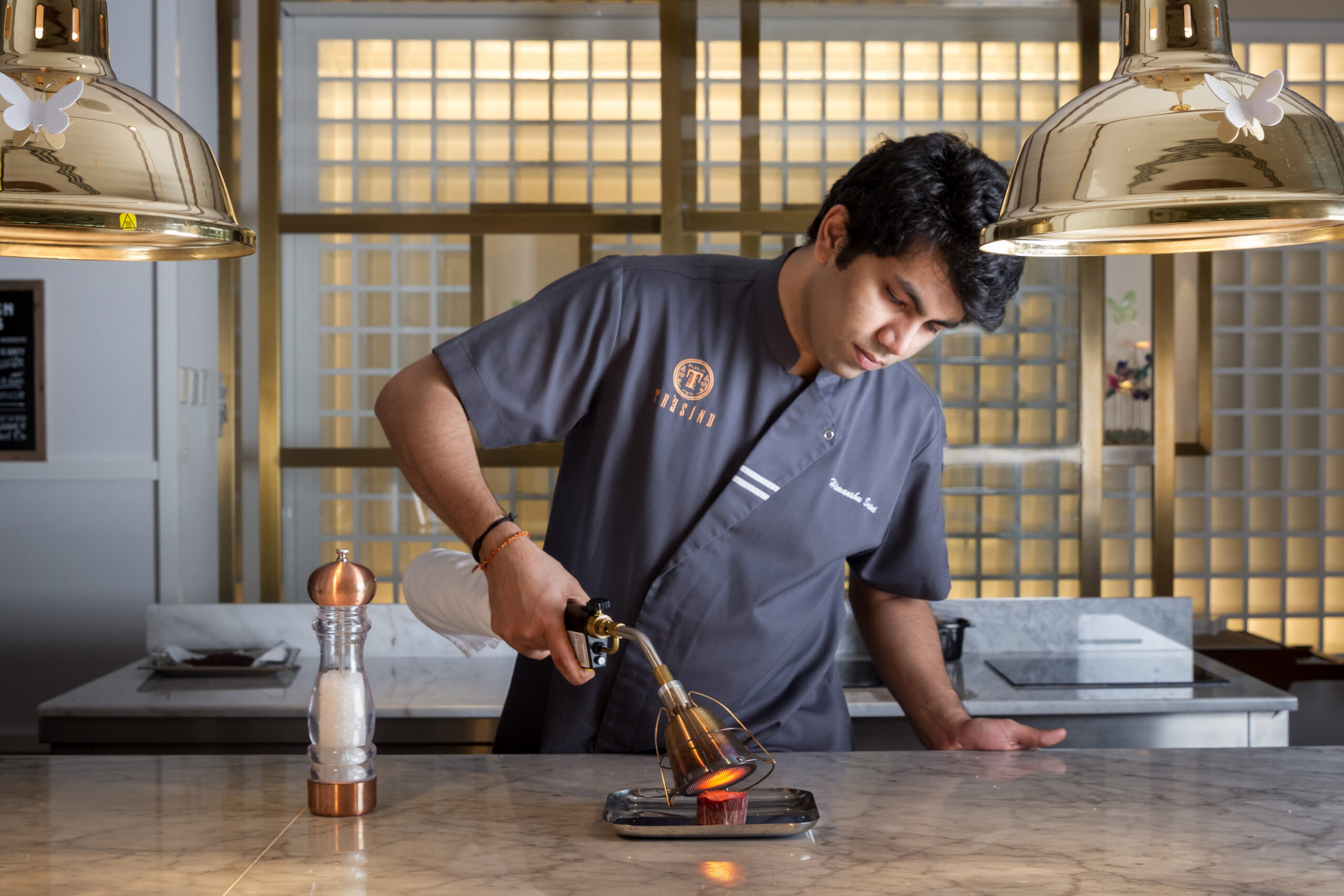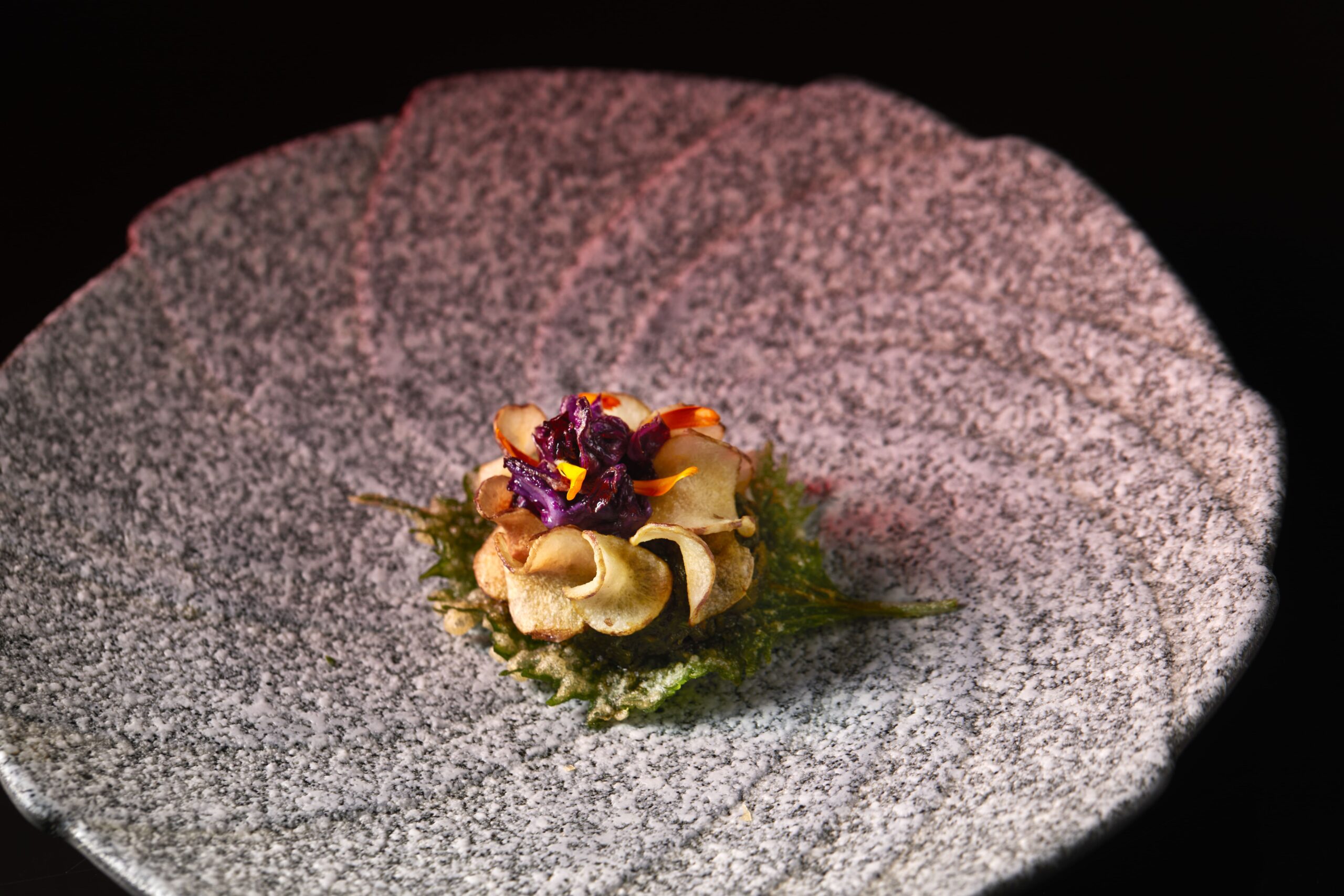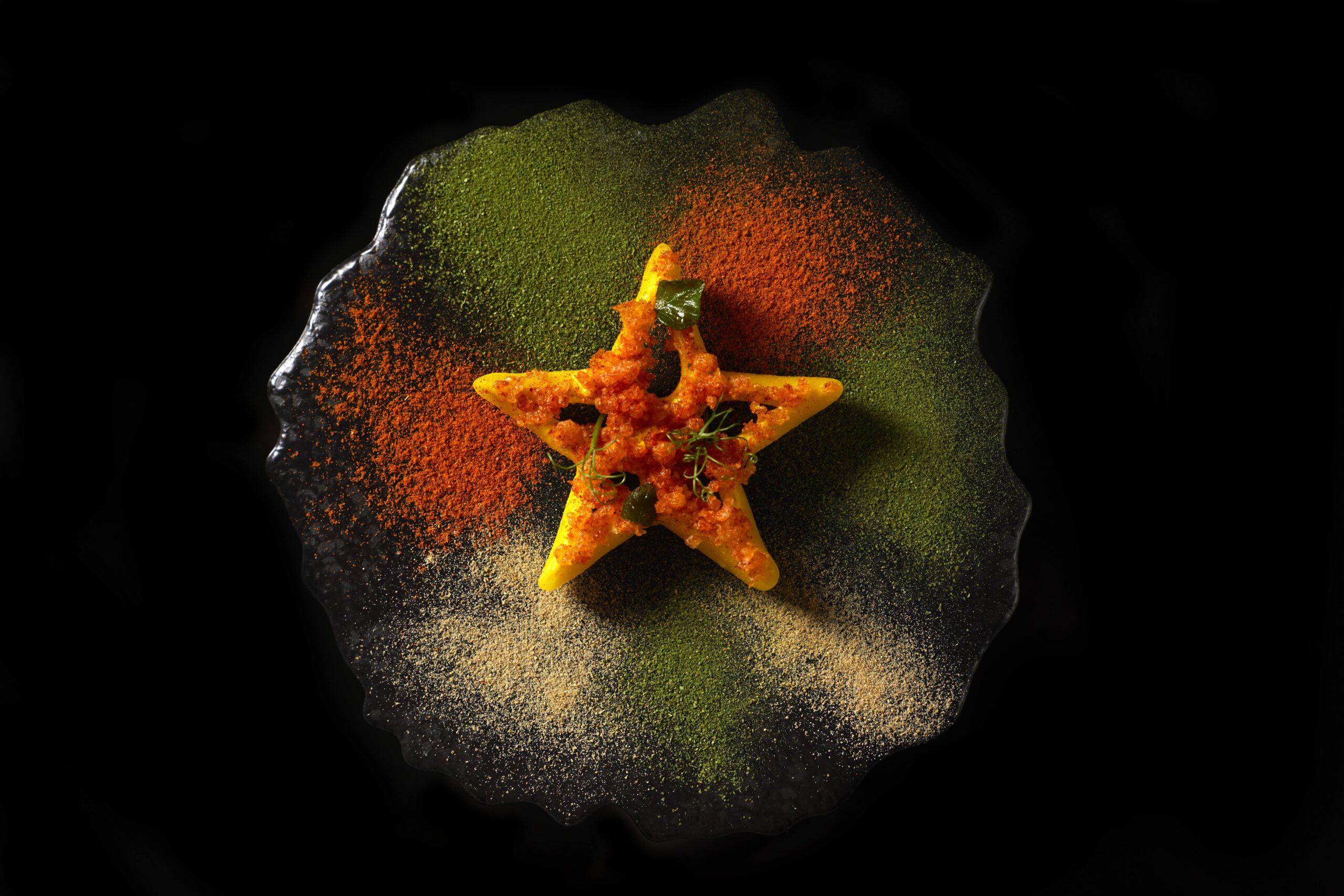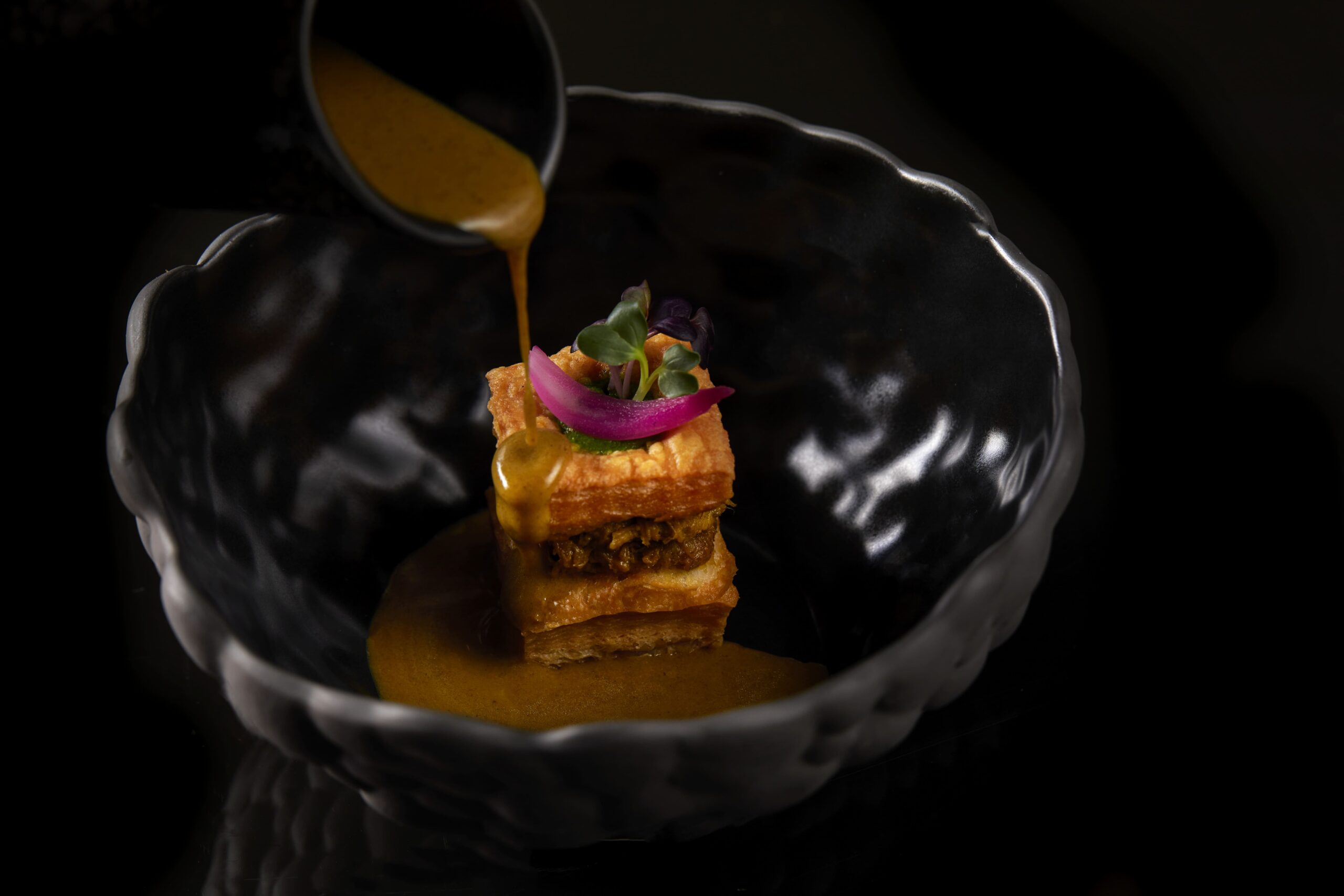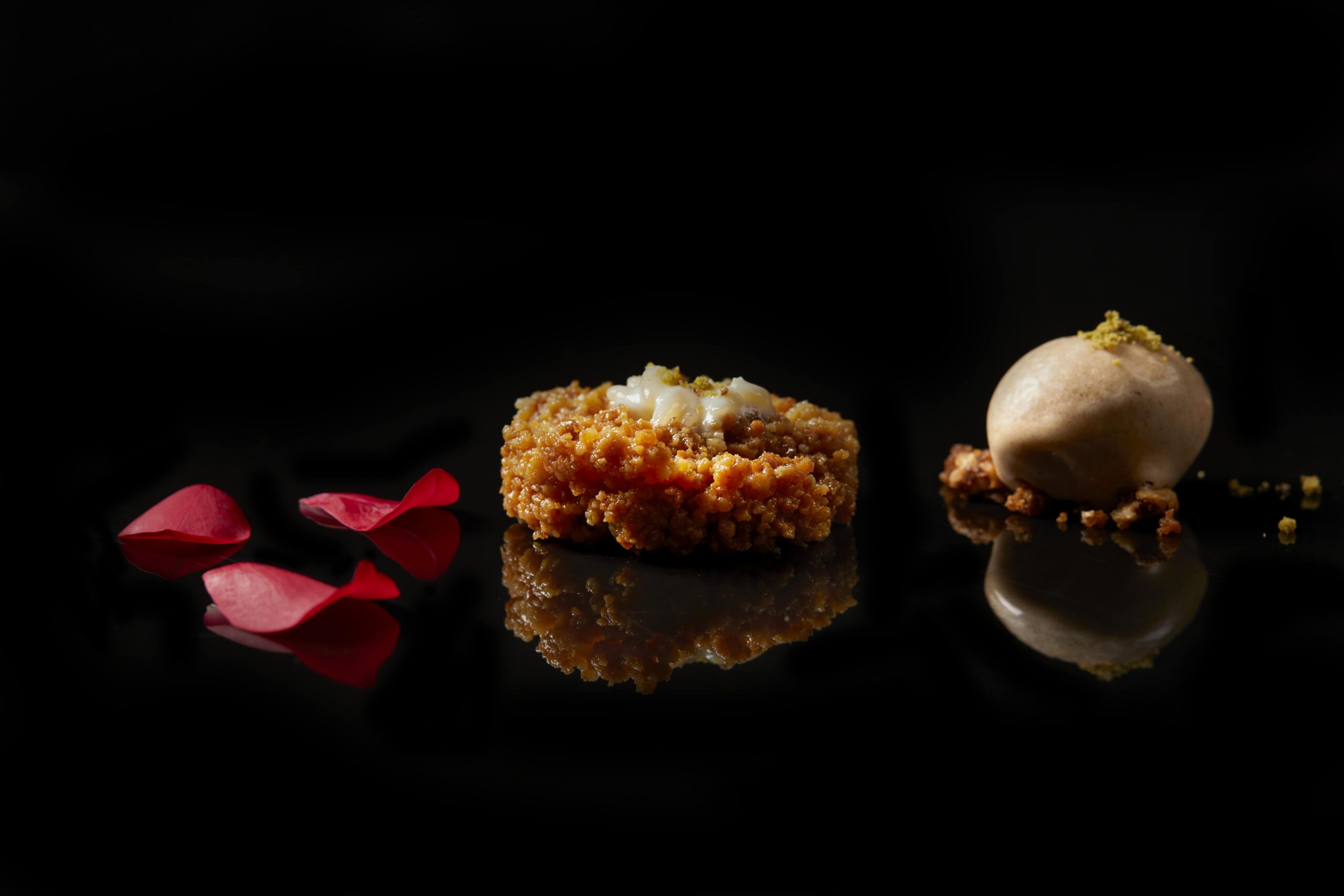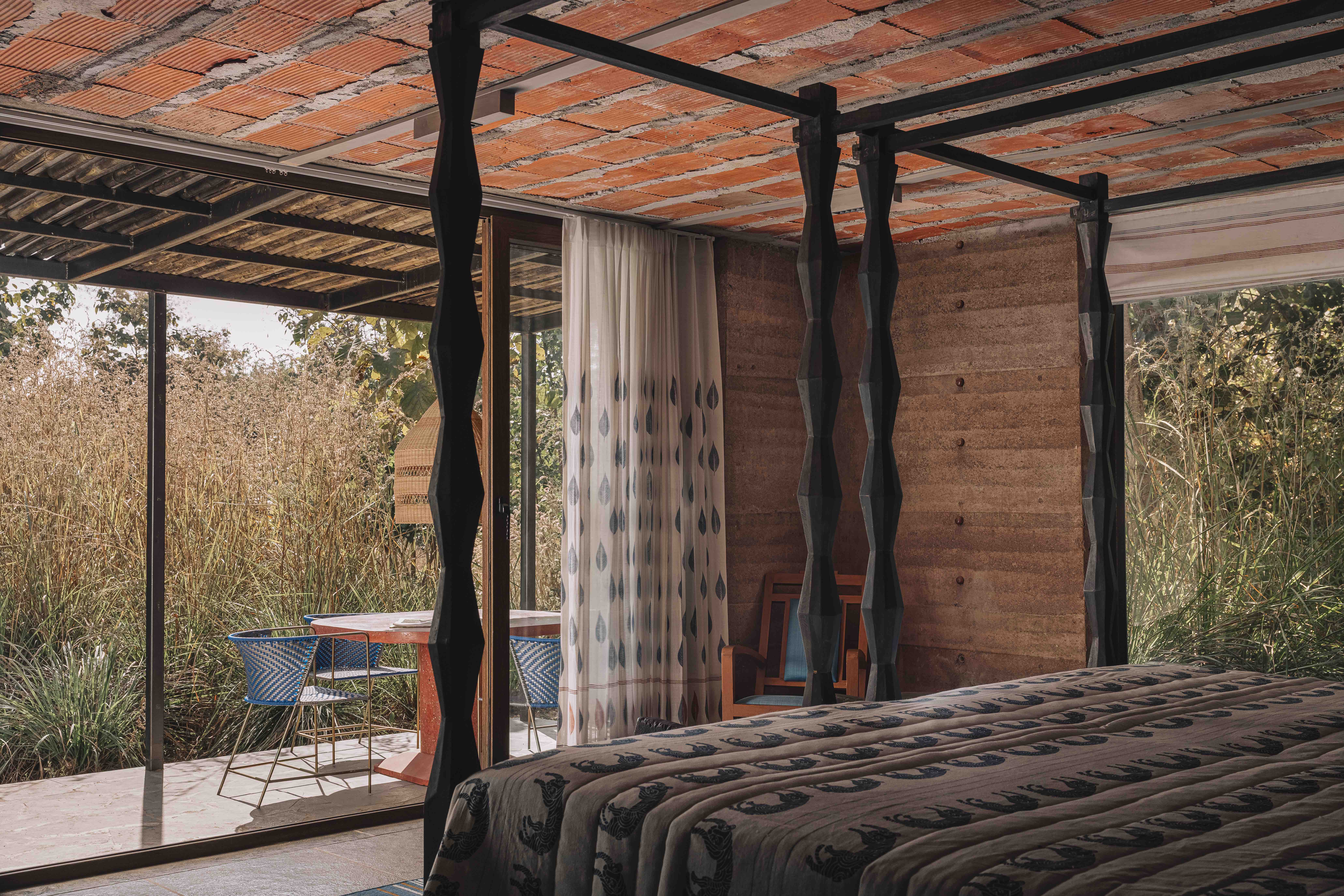Deep in the alleyways of Delhi there lies a vibrant melée of stalls, ensconced in a babble of enticing aromas and flavours. Incandescent lamps shine over inviting mountains of golden jalebis, and large cauldrons bubble and froth with kheer and rabri. Like buttery full moons in a night sky, rotis are stuck onto the charcoal walls of a tandoor oven. A spicy whiff of charred lamb wafts up into the air from the skewers that gently rotate over an open flame. An army of flavours and aromas clamour for attention upon the busy streets of Delhi, the home of a plethora of cuisines.
It is in these effervescent streets where Chef Himanshu Saini grew up, navigating within a city famous for its signature chaat stalls, Mughlai food, sweet shops, and the bustling ‘paranthe wali gali’ (paratha street). Growing up in a joint family bustling with his grandfather and grand-uncles’ families, Saini’s childhood was filled with days spent by his mother’s side, learning the ropes in a large kitchen that was much like the ones in restaurants.
Competing with the methodical nature of professional kitchens, this home kitchen was perpetually bustling with life, with large meals being cooked each day for fifteen members. Each member was assigned a job, with someone busily stirring a pot of vegetables upon the stove, and while another splashed a crackling tadka upon the simmering dal, a third would be kneading dough, with someone else grinding grains and spices to prepare fresh chutneys. Saini’s upbringing was so inextricably linked with cooking, right from every street laden with a mélange of delicacies, to the training he received in his own home, that it seems he was destined to be a chef.
With humble roots, the now Dubai-based chef has recently won a Michelin-Star for his restaurant Trèsind Studio, which is the hallmark of innovative Indian cuisine.
Chef Himanshu Saini at Trèsind Studio.
Trèsind’s first outlet in Dubai was created with the intention of serving progressive, modern Indian cuisine. Trèsind’s outpost in Mumbai has also been making waves with its innovative culinary approach. In fact, recently, they flew down Saini to recreate the award-winning menu from the Dubai restaurant.
Over the years, the Dubai-team has attempted to simplify the usually complex nature of Indian cuisine through their dishes. According to Chef Saini, “Indian cuisine is very diverse, complex, and difficult to define.” He uses minimalistic presentation techniques and innovative menu designing to curate an experience that helps delve into Indian cooking. When I asked Chef Saini about his cooking philosophy, he defined his brand of cuisine as something very personal. Rather than use the label of “progressive Indian cuisine”, Saini and his team attempt to present the constant evolution of food, particularly Indian fare, through a series of dishes that are built on traditional recipes.
Artichoke cafreal; corn 65 with butter; and khari, slow cooked lamb at Trèsind Studio.
I asked Chef Saini about some aspects of cooking that he picked up at a young age, that he continues to utilise even today. He fondly speaks about the use of the imam dasta, or the mortar and pestle. Saini swears by the stone mortar and pestle to provide a perfect texture and consistency for chutneys. He insists that store-bought pre-ground spices or machine-blended chutneys lack a certain depth of flavour. The visual of a traditional mortar and pestle on the counter of a professional kitchen in Dubai certainly immortalises the legacy of traditional Indian cooking.
Himanshu Saini’s approach to preparing his meals is that he is always true to himself. He employs an unpretentious approach, wherein he tries to share the meals and ingredients that he enjoys eating the most. Instead of following an impersonal guideline or trend in cooking, he adds a flair of originality that makes his dishes stand out from the rest.
Coming from an agricultural background, Saini’s father and grandfather taught him to use certain flowers to bring out flavours in a meal. Thus, for him, even presenting a dish is a very organic process. Rather than focussing solely on the aesthetics of plating, he uses herbs and flowers that enhance the flavour profile of a dish. Sometimes, a dish demands a rustic, minimalistic plating, and that is what adds to its beauty.
Dishes at Trésind Dubai evoke a sensory experience and boast floral presentations.
Upon being asked about his signature dish, Chef Saini has a rather philosophical perspective. He says, “For me, there are no signature dishes. They limit your imagination […] Every dish is an incomplete dish.” He goes on to explain that by labelling a dish as “signature”, he would be obligated to tie it to his identity and forever immortalise it on his menu. It would prevent him from ever refining or altering the dish, and would thus reduce scope for innovation. To me, this inspiring way of thinking bears a kernel of wisdom that can be applied to a variety of practices. It gives people a chance to constantly strive for perfection, and to see the potential for improvement in every creation of theirs.
Words by Gayatri Thakkar.
Images via Trésind Dubai.
